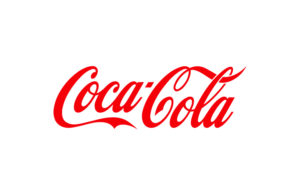Coca-Cola analyzes dozens of research and report sources to compile four macro forces that will shape retail and foodservice preferences driving change.
 In just 365 days, the world as we knew it transformed. 2020 started with the emergence of the COVID-19 pandemic, which led to stockpiling, the closing of businesses, information and misinformation overload, pain and panic.
In just 365 days, the world as we knew it transformed. 2020 started with the emergence of the COVID-19 pandemic, which led to stockpiling, the closing of businesses, information and misinformation overload, pain and panic.
More than a year later, consumers are still in the process of re-balancing and re-establishing new behaviors and routines, and the retail and foodservice industries continue navigating how to respond accordingly.
The Coca-Cola Co. analyzed research and reports from dozens of sources – both proprietary and third-party – and identified 16 trends laddering up to four macro forces that are driving change in our world: culture, technology, economy and environment.
A summary of the report’s findings is below:
The long-standing trend of urbanization is showing signs of reversal.
- De-urbanization: Since 2000, population growth in large suburban counties has increased. As a result, people enjoy less crowded areas and lower living costs for more space.
- Urban and suburban divide: Urban and suburban citizens are increasingly socially, politically and culturally divided due to factors like migration, employment and income. 11.7 million people live in rural areas without access to healthy food retail but have the market demands to support supermarket investments.
- Retailer takeaway: Expand reach to rural and suburban residences and explore impact of growing geographic divide on shopping and consumption patterns.
The coronavirus pandemic exposed weaknesses in how prepared we were, as a society and personally, for a public health crisis.
- Heightened preparedness: Shoppers took extreme measures to over-prepare so they’re ready for whatever the future holds. 60% of Americans have said that the pandemic will change the way they shop, even after it’s over, and most indicated they have stockpiled on items like toilet paper and meat..
- Hyper-hygiene: Hygiene will be a lasting concern and expectation for most when entering public spaces. People are demanding that businesses accommodate these new cleanliness needs with sanitation and tracing protocols of their own.
- Retailer takeaway: Communicate new health and safety protocols across the supply chain.
Although increased time at home has made internet accessibility a requirement to thrive in this new digital age, not all Americans are equipped to make the switch, and new societal factions may emerge as a result of the split.
- Mandatory connectivity: Internet usage has increasingly grown over the years, but the pandemic forced true reliance, moving nearly all daily activities online. The forced dependency also established new digital preferences for both work and play that many claim will stay for the foreseeable future.
- Digital divisions: 19 million Americans lack fixed access to the internet, one in four of which are in rural areas. These citizens may miss out on some opportunities afforded to those with a reliable connection.
- Retailer takeaway: Digital-only and digital-first solutions are here to stay, but don’t alienate key consumer groups.
"behavior" - Google News
June 15, 2021 at 03:39AM
https://ift.tt/3vqL1lx
Pandemic Effects to Dictate Consumer Behavior Moving Forward - Convenience Store Decisions
"behavior" - Google News
https://ift.tt/2We9Kdi
Bagikan Berita Ini














0 Response to "Pandemic Effects to Dictate Consumer Behavior Moving Forward - Convenience Store Decisions"
Post a Comment